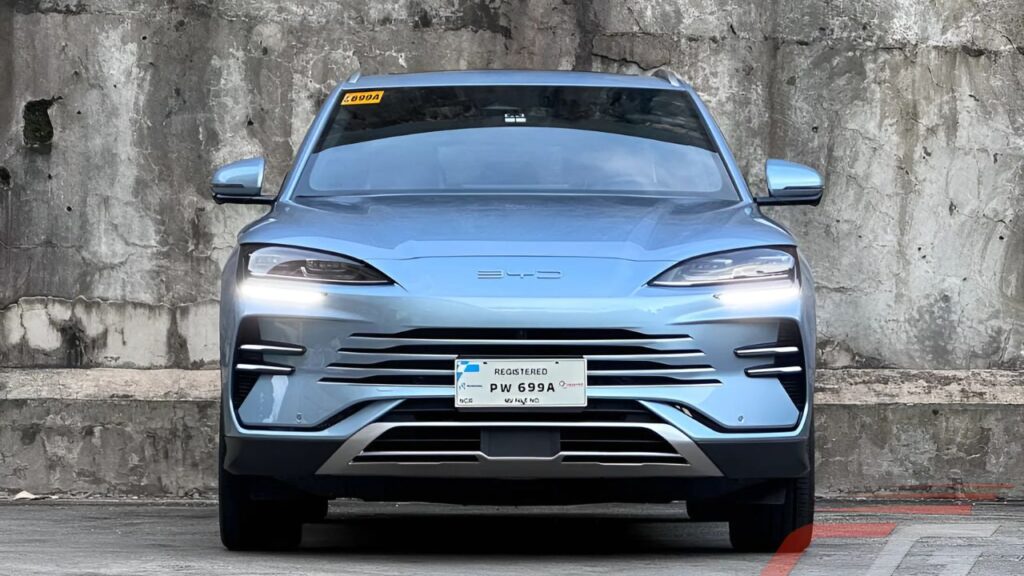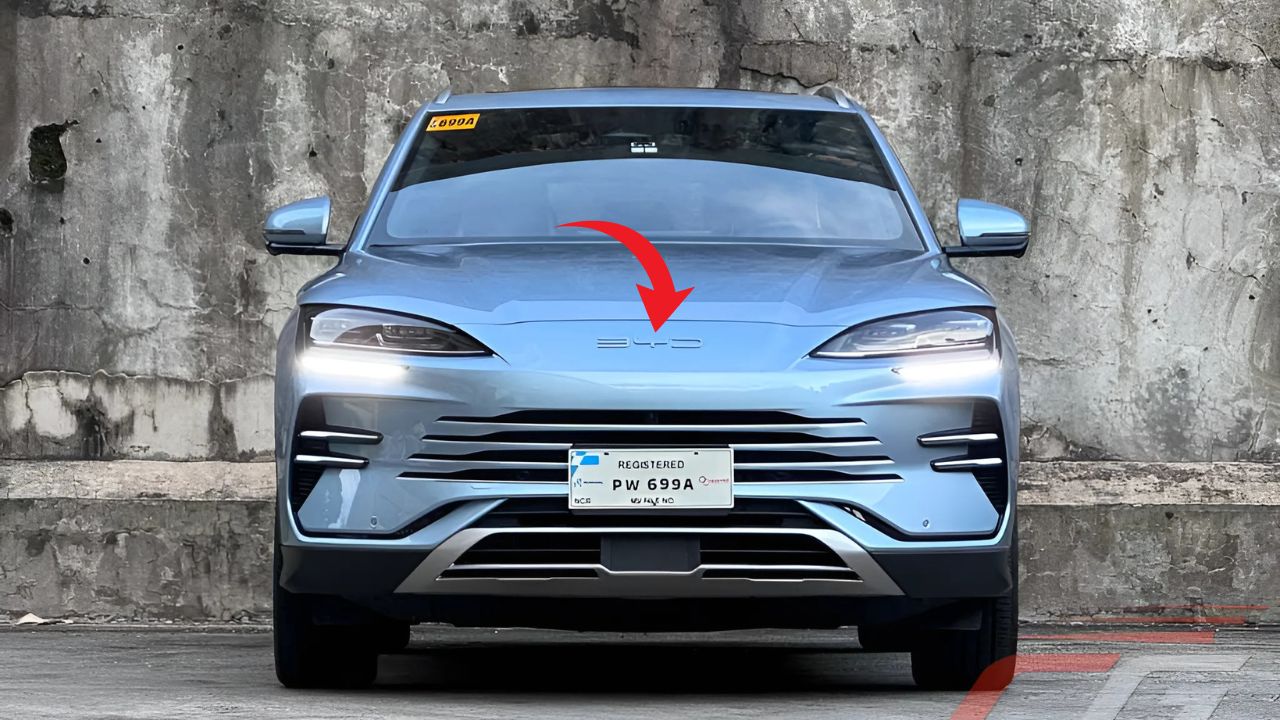The Australian electric vehicle landscape is about to experience a seismic shift with the arrival of the BYD Sealion 7. This meticulously engineered electric SUV doesn’t just compete with the Tesla Model Y – it fundamentally challenges what consumers should expect from mid-size electric vehicles in terms of value, performance, and technology.

Why the BYD Sealion 7 Matters for Australian Drivers
The BYD Sealion 7 arrives in Australia priced from $54,990 for the Premium variant and $63,990 for the Performance model, both before on-road costs. This pricing significantly undercuts the Tesla Model Y, which starts at $63,400 for the RWD variant. For Australian families seeking an electric SUV that doesn’t compromise on features or performance, the Sealion 7 represents unprecedented value.
BYD’s ambition to become one of the biggest new car brands in Australia has received a further boost with the arrival of the BYD Sealion 7 in the top-selling medium SUV category. The company isn’t just launching another vehicle – they’re establishing a new benchmark for what electric SUVs should deliver at this price point.
Performance That Delivers on Every Promise
Powertrain Options That Cater to Every Need
The Sealion 7 offers two distinct powertrain configurations, each designed to meet different driving preferences and requirements. The rear-wheel-drive Premium produces 230kW/380Nm, manages 0-100km/h in a claimed 6.7 seconds, and is capable of 482km of WLTP range. The dual-motor AWD boosts outputs to 390kW/690Nm, drops the 0-100km/h sprint time claim to 4.5 seconds, and achieves 456km WLTP range.
These performance figures place the Sealion 7 firmly in premium territory. The AWD Performance variant’s 4.5-second acceleration rivals sports cars costing twice as much, while the single-motor Premium provides the perfect balance of efficiency and capability for daily driving.
Advanced Battery Technology
Both variants utilize the same 82.56kWh lithium iron phosphate (LFP) pack, representing BYD’s industry-leading Blade Battery technology. This isn’t just about capacity – it’s about safety, longevity, and thermal management. BYD has been a pioneering name in the battery industry for more than 29 years. The latest game-changing Blade Battery has passed a series of extreme tests in rigorous conditions making it one of the world’s safest batteries.
The real-world implications of this technology become apparent in Australian conditions. The BYD Sealion 7 is expected to charge at up to 150kW on a fast charger and should charge from 10 to 80 percent in 32 minutes. For families planning road trips or daily commuters, this charging speed means minimal disruption to travel plans.
Design Philosophy That Prioritizes Function and Form
Exterior Aesthetics
Designed by BYD’s Global Design Director, Wolfgang Egger, the BYD SEALION 7 is more than just an SUV—it’s a lifestyle statement. Seamlessly blending ocean-inspired aesthetics with cutting-edge innovation, this SUV is crafted for those who live life at full charge.
The design language speaks to contemporary Australian tastes without appearing overtly futuristic. The Sealion 7 follows a familiar trend in the SUV segment by offering a more coupe-like profile, although the roofline doesn’t plunge as much as some others at the rear, meaning it remains rather practical inside. This approach ensures the vehicle maintains its utility while delivering the sophisticated appearance that modern buyers demand.
Interior Excellence
Riding on a huge 2930mm wheelbase, the 4830mm-long Sealion 7 offers acres of room inside. The perforated-leather electric front seats (eight-way driver, six-way passenger) each have heating and two-speed cooling, and they’re really comfortable.
The interior represents a significant evolution in BYD’s design philosophy. The interior’s headline feature is that 15.6-inch touchscreen infotainment system. It’s colossal yet graphically sharp and, like other BYD cars with a similar unit, it can rotate 90 degrees into a portrait orientation. This flexibility allows the system to adapt to different use cases, whether navigating city streets or enjoying multimedia content during charging stops.
Space utilization demonstrates thoughtful engineering. There’s plenty of second-row space regardless of the variant. In terms of amenities, there’s one USB-A port and one USB-C port, along with central rear-facing air vents. BYD’s signature seat contours make for comfortable accommodation, which will allow you to enjoy the enormous glass roof above.
Technology Integration That Enhances Every Journey
Advanced Driver Assistance Systems
With BYD’s state-of-the-art ADAS (Advanced Driver Assistance Systems) and 360° panoramic cameras, driving this electric SUV becomes a stress-free experience. Whether you’re navigating busy city streets or cruising on the open road, this intelligent system continuously monitors your surroundings, adjusting to changing conditions and providing support where you need it.
Safety technology extends beyond basic assistance features. BYD says both Sealion 7 models will include a high specification including leather seats (heated and ventilated in the front), premium audio, heads-up display, 360-degree camera, driver assistance safety suite and panoramic sunroof.
Connectivity and Convenience Features
The Sealion 7 has also been confirmed to be equipped with the latest tech including remote opening via smartphone, BYD’s 15.6-inch large rotating touchscreen and Vehicle-to-Load (V2L) functionality which can power devices and appliances.
The V2L capability transforms the Sealion 7 into a mobile power station, capable of running camping equipment, tools, or even providing emergency home backup power. This feature demonstrates BYD’s understanding that modern electric vehicles should integrate seamlessly into their owners’ lifestyles.
Competitive Positioning in Australia’s EV Market
Value Proposition Analysis
When compared to direct competitors, the Sealion 7’s value proposition becomes compelling. This means it undercuts the Tesla Model Y ($55,900) but not the XPeng G6 ($54,800). All pricing is before on-road costs. Some other Chinese-built battery-electric mid-size SUV rivals include the impressive Deepal S07 ($53,900), the affordable Leapmotor C10 ($45,888), and the mainstream Kia EV5 ($56,770).
The pricing strategy reflects BYD’s commitment to democratizing premium electric vehicle technology. While some competitors offer lower entry prices, none match the Sealion 7’s combination of performance, range, and standard equipment at these price points.
Market Impact Expectations
BYD’s local importer EVDirect expects the Sealion 7 to become the brand’s best-selling vehicle locally when it goes on sale. This confidence stems from Australia’s growing appetite for electric SUVs and the vehicle’s strategic positioning against the market-leading Tesla Model Y.
Model Y deliveries declined from 28,709 in 2023 to 21,253 in 2024, reflecting both a softening in the Australian car market and electric vehicle sales, and increased competition from new brands. The Sealion 7 arrives precisely when the market seeks alternatives to the established leader.
Real-World Performance and Efficiency
Australian Road Conditions
BYD has done well to set this car up for Australian roads, and regardless of whether there was a concerted effort to tune it locally or not, the fact is it’s impressively solid. This assessment from initial Australian testing suggests the vehicle’s suspension and handling characteristics suit local driving conditions.
The BYD SEALION 7 features a front double-wishbone and rear multi-link suspension setup, along with FSD (Frequency Selective Damping) shock absorbers. This advanced system adjusts in real-time to deliver a smooth, stable ride by adapting to different road conditions.
Energy Efficiency in Practice
An urban drive route in the Sealion 7 Performance lasting roughly 40 minutes returned consumption figures hovering around the 19.0kWh/100km mark. These preliminary figures suggest real-world efficiency aligns closely with official estimates, providing confidence for potential buyers concerned about range anxiety.
The efficiency achievements become more impressive when considering the vehicle’s performance capabilities. Achieving sub-20kWh/100km consumption while delivering 390kW of power demonstrates sophisticated energy management systems.
Ownership Experience and Support
Warranty and Service Commitments
Warranty provisions sound good on paper at six years/150,000km for the vehicle, but read the fine print and there are lot of caveats. For instance, the multimedia system (screen etc), AC/DC charging port assembly and USB charging ports are only covered for three years/60,000 kilometres. The LFP battery pack is backed by a fairly standard eight year/160,000km warranty.
Capped price service costs are competitive at an average of $317 per annum, which works out to just over $1900 across six years. Service intervals are pretty handy too, set at 12 months or 20,000km, whichever comes first.
Dealer Network and Support
BYD vehicles are sold in Australia via EVDirect which is building a network of dealerships to support the company’s sales ambitions. The expanding dealer network reflects BYD’s long-term commitment to the Australian market and ensures owners have access to sales, service, and support infrastructure.
Areas for Consideration
Charging Infrastructure Compatibility
Charging speeds are also far from class leading at 150kW on a DC charger. Granted, the majority of public DC fast chargers in Australia are still between 50 and 100kW, but when rivals offer charging bandwidth up to 350kW it makes BYD’s efforts look paltry.
While 150kW charging meets current Australian infrastructure capabilities, future-proofing considerations may influence buyers planning long-term ownership. However, the practical impact remains minimal given Australia’s current charging network limitations.
Storage and Practicality Considerations

Less impressive aspects of the 2025 BYD Sealion 7 start with the lack of a spare tyre. While this is common to most EVs, it’s still unacceptable in my view. For Australian buyers accustomed to having spare tires, especially those planning outback travel, this omission requires consideration.
With 58 liters of space in the front and 520 liters in the rear, expandable to 1,789 liters with the rear seats folded, the SEALION 7 offers versatility needed for any adventure. Despite the spare tire concern, storage capacity remains competitive for the segment.
A Paradigm Shift for Australian Electric Mobility
The BYD Sealion 7 represents more than another electric SUV option – it embodies a fundamental shift in what Australian consumers can expect from electric vehicles at this price point. If you’re in the market for an EV, there are a lot of reasons to take the 2025 BYD Sealion 7 very seriously. It’s sharply priced, generously equipped and impressively engineered. Simply put, the positives far outweigh the negatives and the hype appears well-earned.
For families seeking an electric SUV that doesn’t compromise on performance, technology, or value, the Sealion 7 delivers compelling arguments across every category. Its combination of 456km range, AWD capability, and premium features at under $64,000 establishes new expectations for the mid-size electric SUV segment.
The vehicle’s success will ultimately depend on BYD’s ability to execute on service, support, and long-term reliability promises. However, the technical foundation, competitive pricing, and feature set position the Sealion 7 as a serious contender for Australian electric vehicle leadership.
As the electric vehicle market matures, the Sealion 7 demonstrates that premium features, impressive performance, and competitive pricing need not be mutually exclusive. For Australian buyers, this represents the evolution they’ve been waiting for in electric mobility.
Frequently Asked Questions
Q: How does the BYD Sealion 7’s range compare to the Tesla Model Y in real-world Australian conditions?
A: The BYD Sealion 7 offers 456km WLTP range for the Performance variant and 482km for the Premium variant, which is competitive with the Tesla Model Y’s claimed range. Initial testing suggests real-world consumption of around 19.0kWh/100km for the Performance model, indicating the official range figures should be achievable in typical Australian driving conditions.
Q: What is the charging speed of the BYD Sealion 7 and how does it work with Australia’s charging infrastructure?
A: The Sealion 7 supports DC fast charging up to 150kW and AC charging up to 11kW. While the 150kW speed isn’t class-leading compared to some rivals offering 350kW capability, it’s well-suited to Australia’s current charging infrastructure where most public fast chargers operate between 50-100kW. The vehicle can charge from 10% to 80% in approximately 32 minutes under optimal conditions.
Q: Is the BYD Sealion 7 suitable for Australian families considering safety, space, and warranty coverage?
A: Yes, the Sealion 7 offers excellent family credentials with a 2930mm wheelbase providing ample interior space, comprehensive safety features including 360-degree cameras and advanced driver assistance systems, and a competitive warranty package (6 years/150,000km vehicle warranty, 8 years/160,000km battery warranty). However, families should note the lack of a spare tire and consider the warranty limitations on certain electronic components when making their decision.

